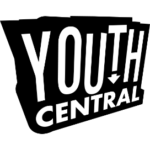With election day a week away, advance voting numbers show Canadians are more invested in this election than the last federal election back in 2021. Over two million people voted on the first day of advance polls, a record number. Turnout was especially strong across Ontario, B.C., Alberta, and the Maritimes, and even the northern territories saw steady line ups, surprising us all. It’s not just typical voters either, across the country, people who usually don’t show up, such as youth, with the lowest turnout rate last election, who early made the effort. It points to a population that’s beginning to pay attention.
Current Polling: Close National Race
Polls right now have the Liberals leading nationally by about 3–5 points over the Conservatives. According to a poll on CBC on Monday afternoon at 3:15 MST.
The NDP sits lower, around 8%, with the Bloc holding their ground in Quebec.
Regionally:
• Atlantic Canada looks good for the Liberals.
• Quebec leans Liberal, but the Bloc is still competitive outside Montreal.
• Ontario is tilting Liberal in the GTA and Conservatives are holding rural areas.
• Prairies and Alberta are Conservative strongholds, not much change there.
• British Columbia is close, could swing either way. NDP are losing ground, with most of their seats from the prior election residing here
• The North slightly favours the Liberals but local factors will matter whether it is a NDP or Liberal majority
Realistically, a few ridings flipping could change everything. Especially in Ontario and B.C., where margins are much smaller
Final Week Messaging
Each party is sticking to a clear strategy:
• Liberals (Carney): Focused on protecting Canada’s economy and sovereignty, framing himself as the experienced, steady option for all Canadians
• Conservatives (Poilievre): Pushing affordability and “time for change,” aiming to channel economic frustration, mostly in rural areas
• NDP (Singh): Framing themselves as the needed balance to either government, focusing on corporate regulation and healthcare. Referencing how they would keep both parties in ‘check’, reinforcing the importance of maintaining NDP stronghold riding.
• Bloc (Blanchet): Leaning into Quebec identity and autonomy, attempting to keep current seats from the growing grasp of the Liberals
The campaigns reflect this. Carney is locked into Ontario ridings. Poilievre is targeting suburban swing seats in Ontario and B.C. Singh is holding down the NDP’s base in B.C. Blanchet is focused entirely on Quebec (as they only run in Quebec).
Leaders’ Debates: No Big Shifts
The English and French debates last week didn’t really change potential election results, due to a decent and well rounded performance from all candidates:
• Carney came off steady, especially in English, but less strong in French, due to his lack of fluency
• Poilievre was regarded as more aggressive, pushing hard on the idea that the Liberals represent the status quo, and connecting Carney to Justin Trudeau
• Singh had some good moments on affordability but didn’t dominate. Many commented on his ‘annoying’ presence that kept interrupting Carney and Poilievre
• Blanchet stayed in his lane, pushing Quebec’s distinct interests, and how no one but himself could defend such ideals
Polls after the debates showed small movement but no major swings. If anything, both front-runners just locked in their existing support.
Final Thoughts
Turnout is way up. The polls are close. Campaigns are scrambling to lock down key ridings before election day.
If you can vote, please vote on Monday April 28th!

